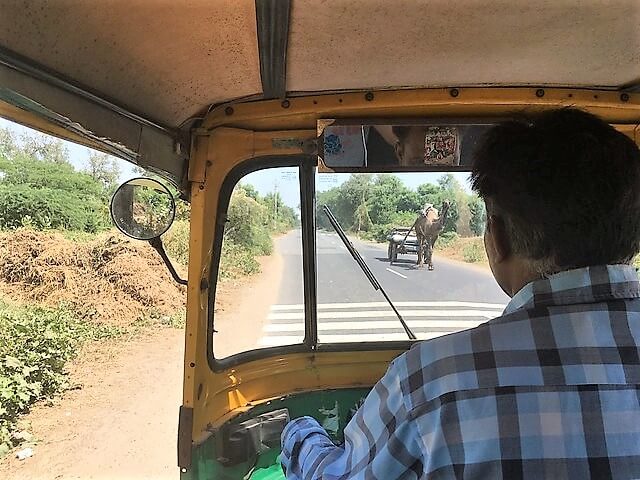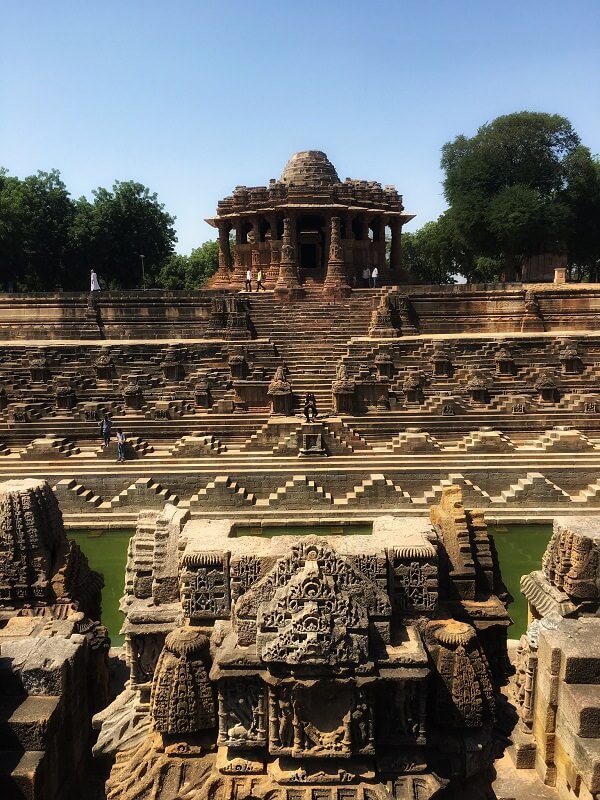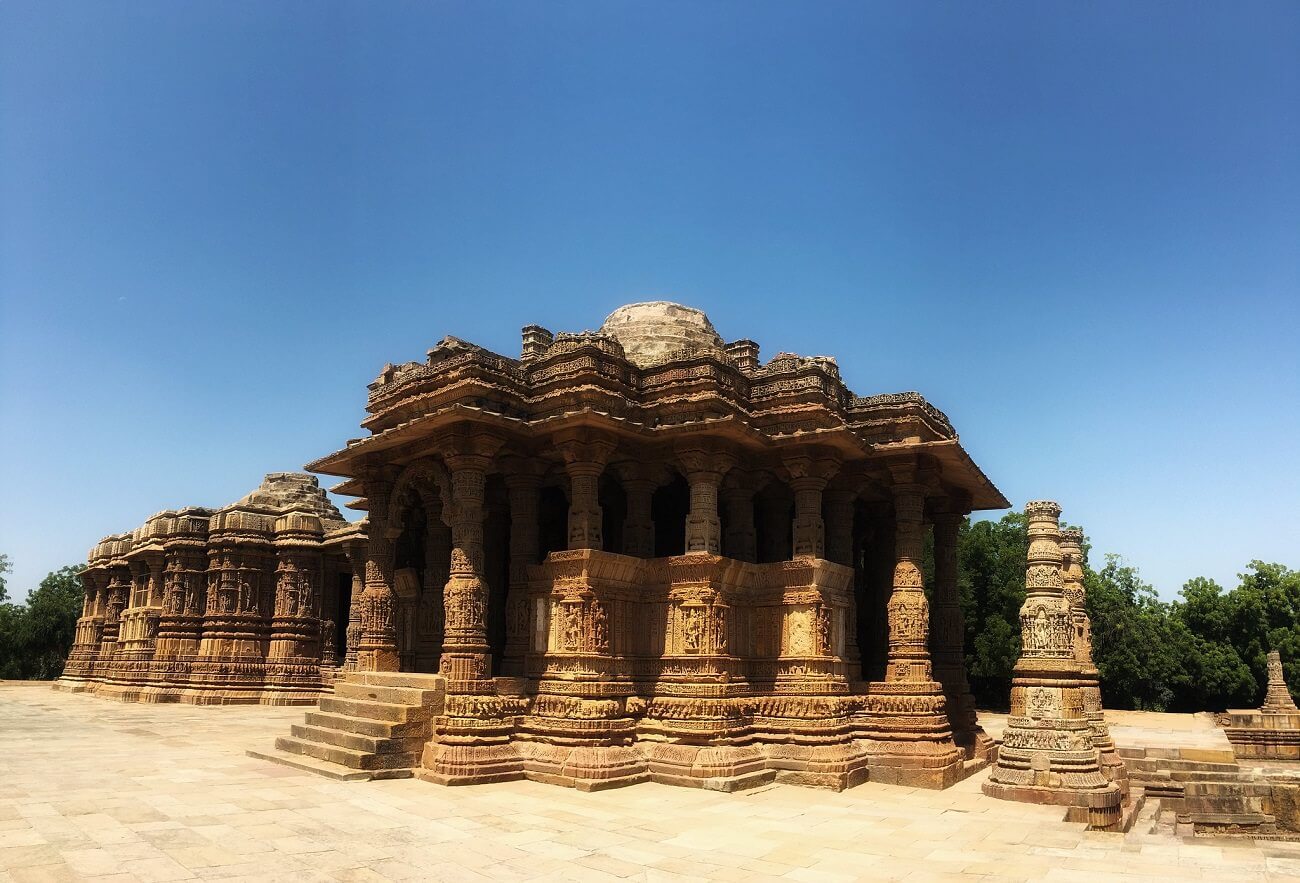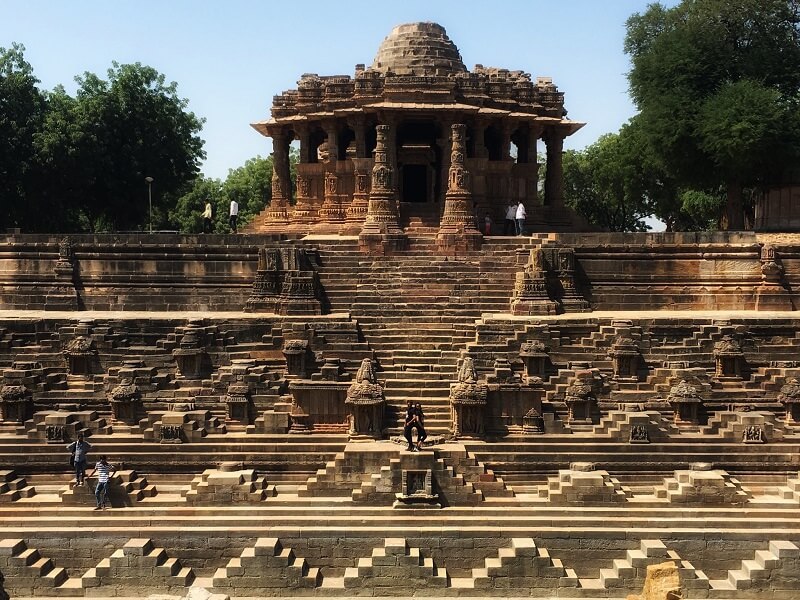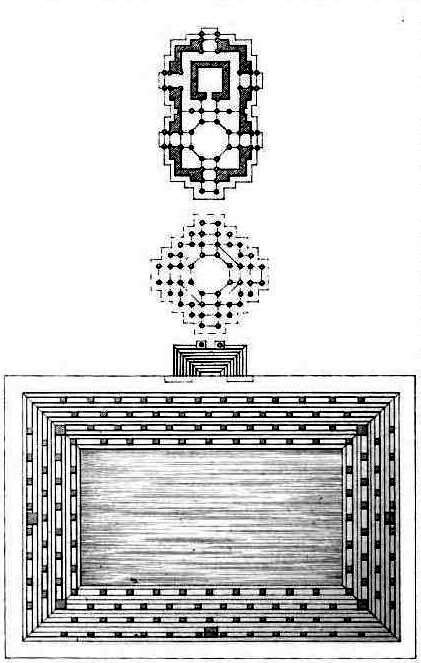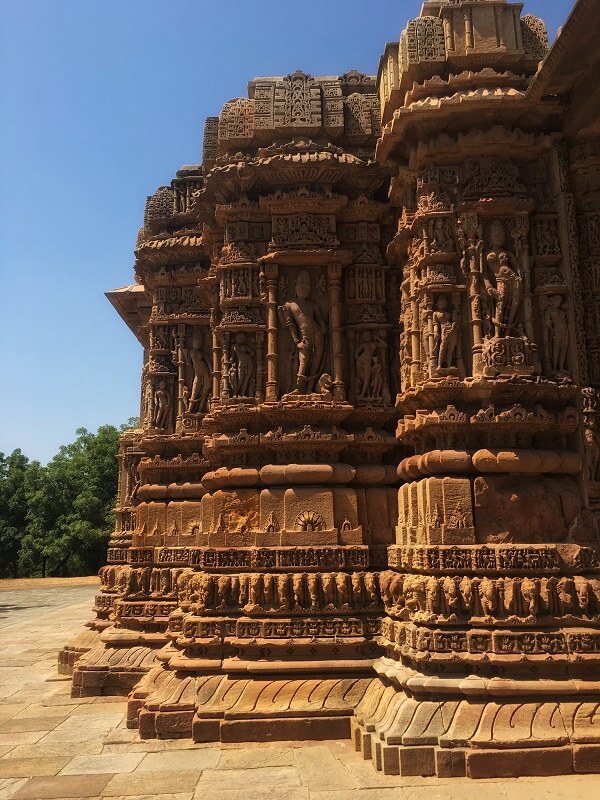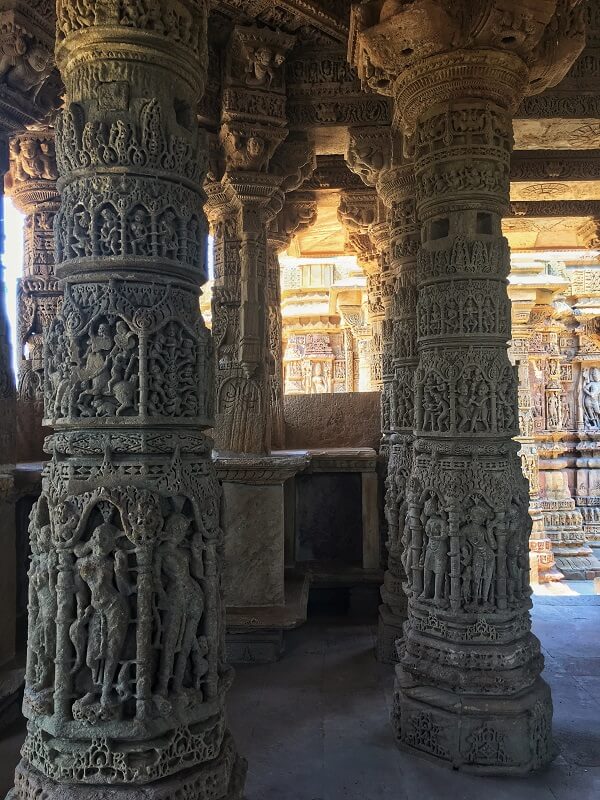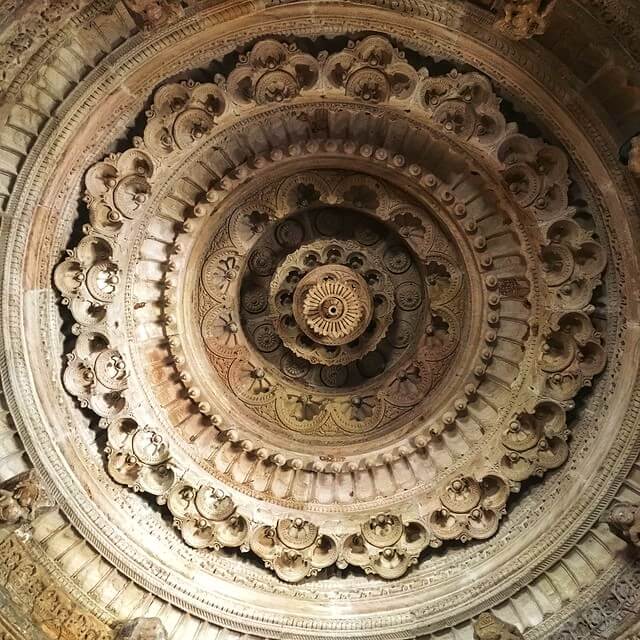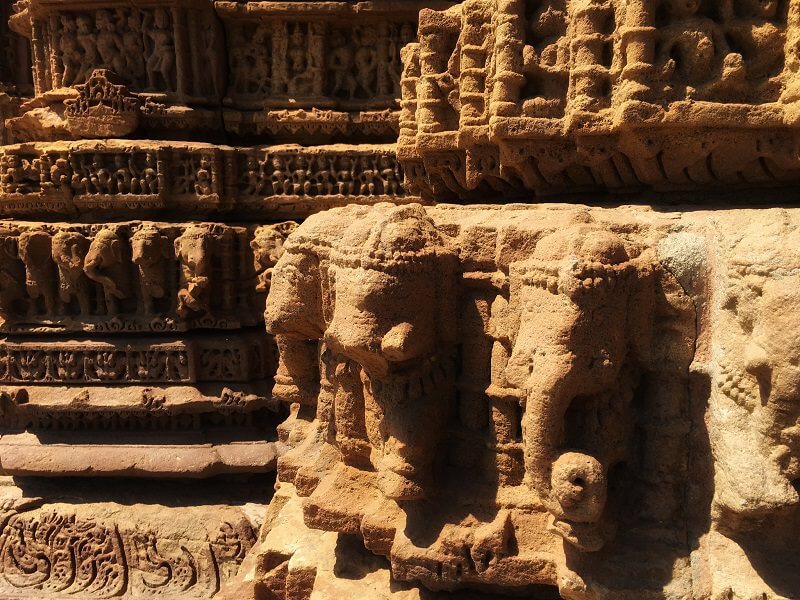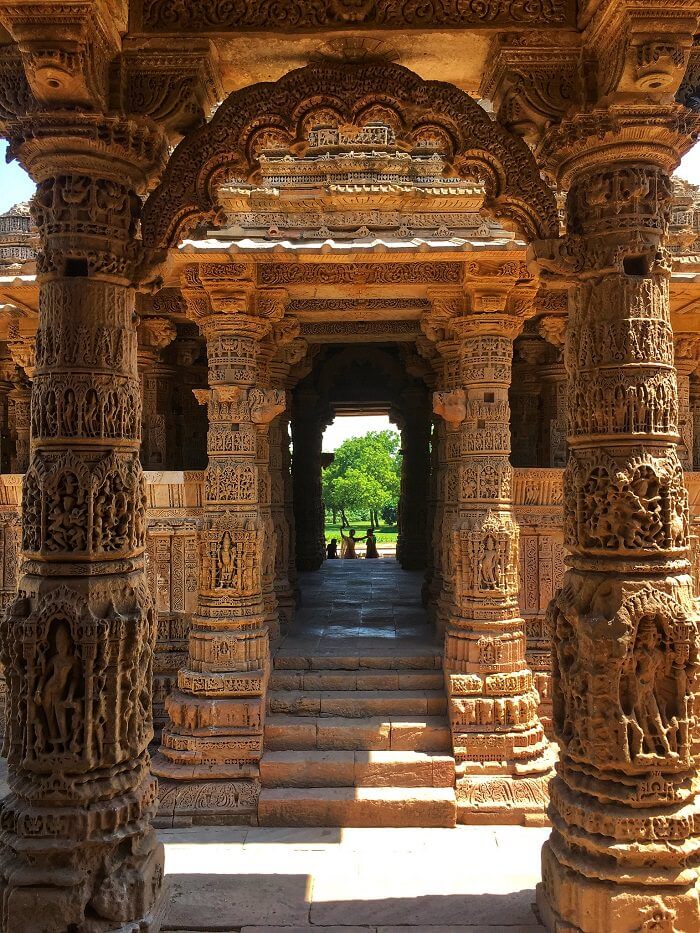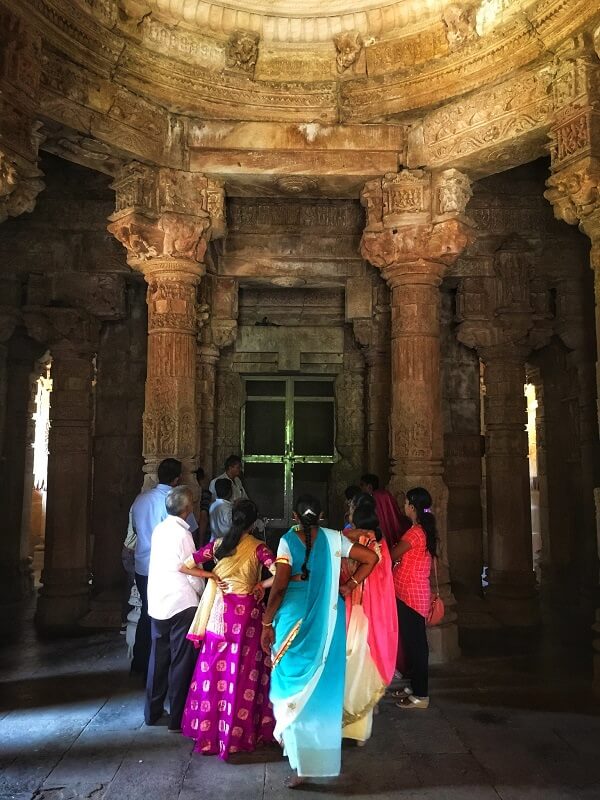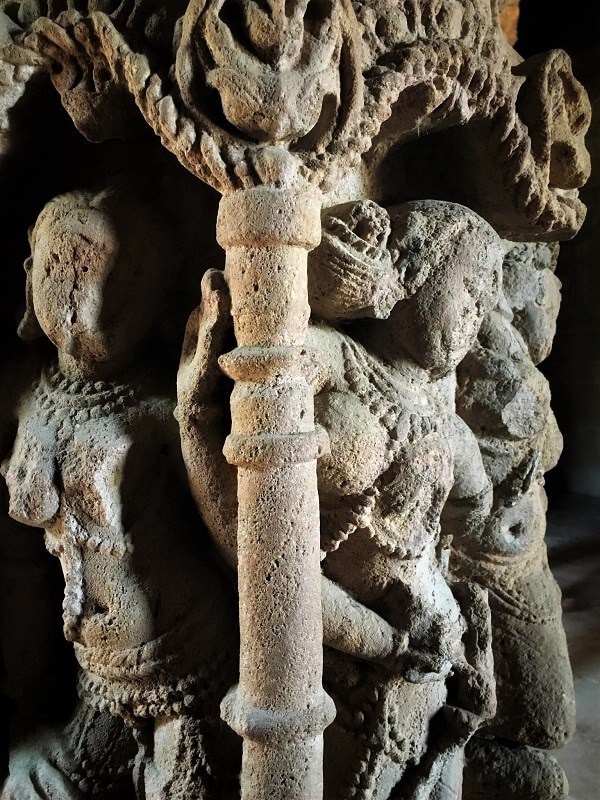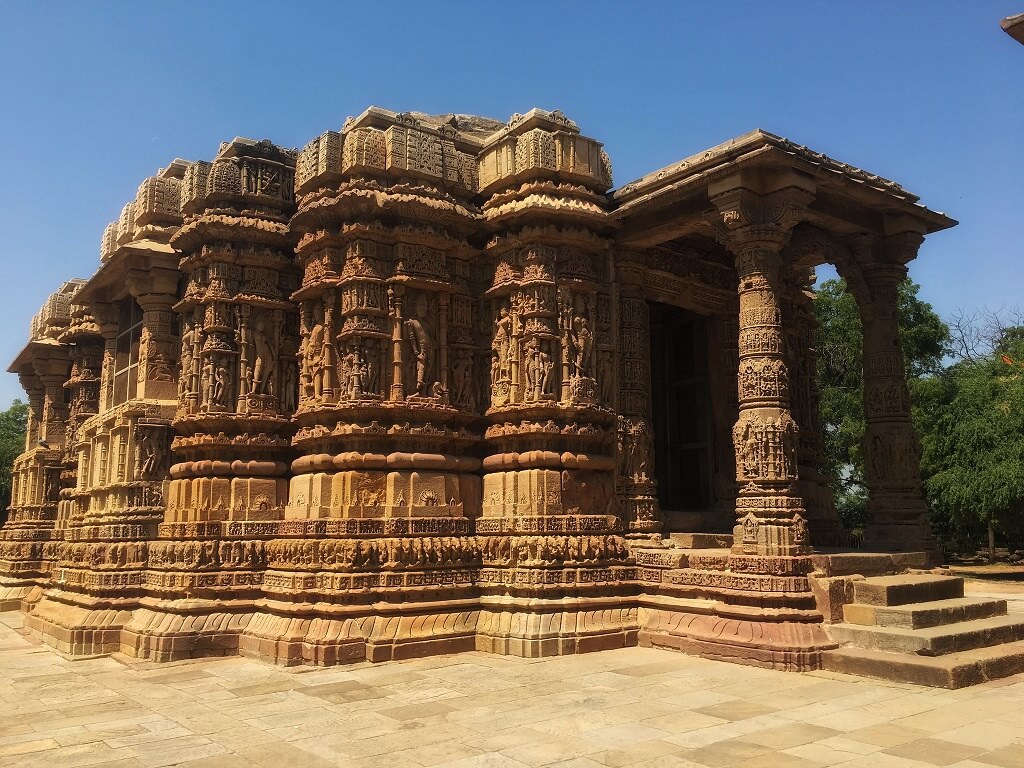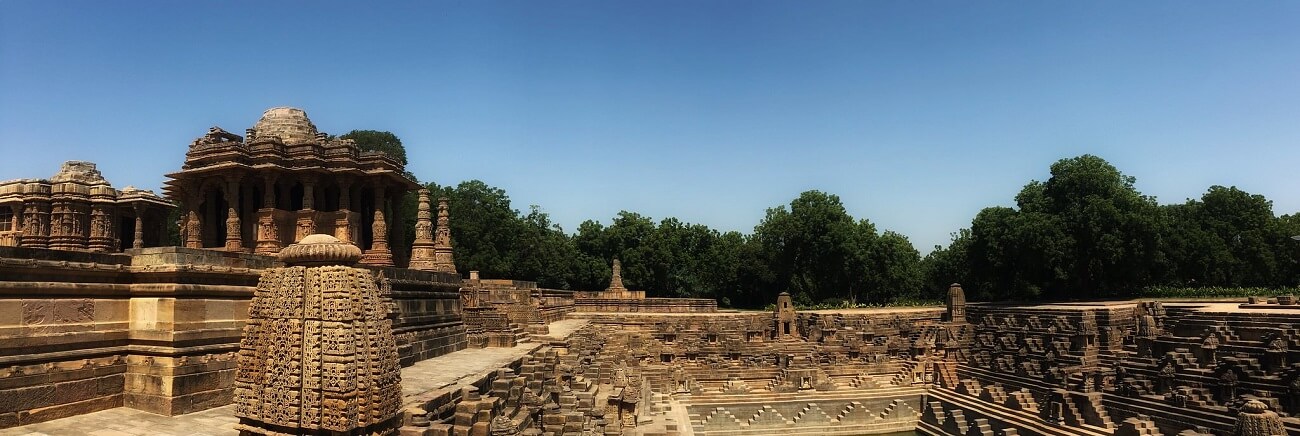
He gave me an incredulous look when I said I wanted to go to the sun temple at Modhera. After all, it is not every day that a passenger takes auto for a 25 km trip. He was even more amused when I clarified that I actually wanted him to take me all the way to Modhera, spend 45 minutes there and then drop me at the same place where we were doing this talking.
“Who else is going?”
“It’s just me”
“When do you want to go?
“Right now.”
“Are you really ready?”
“Oh yes, sir. Let’s go!”
Off we went to Modhera, a Sun Temple 25 KM away from Mehsana where my sister lives. She had disclosed that this place was really nearby and 34-degree centigrade was not a strong enough reason to stop me from seeing it. But not before our driver saheb had to stop at an Indane Gas centre to fill the LPG cylinder for home, the very reason for which he had ventured out that day. “Wife’s orders sir, or I won’t get any food tonight”, he explained.
At the Temple
Owing to the weather and the time of the day, not a lot of people were at the temple when we reached there. Got a ticket from the ticket counter and was greeted by a huge well-maintained lawn after the entrance. I think the annual Modhera Dance Festival conducted by Gujarat Tourism happens here. A pre-wedding shoot was going on at the water tank (these guys are everywhere these days!) and I paused a little to appreciate the effort they were taking to have their wedding album made. A lone tourist guide was showing a family of three around, they seemed to be pretty interested in the architecture of the place.
From there, it was mostly a solitary affair until a bus full of tourists arrived and the place came alive with the characteristic chatter that precedes Indian tourists. I did not mind that today, it was a bit gloomy without them. An elderly couple was struggling with the smartphone that their son had gifted them and asked for help in taking photographs. Took their photos and showed them how to take a selfie, and the ice was broken. Gujaratis are genuinely friendly folks…
Surya Kunda (Water Tank) and Sabhamandapa in the background
The Sabhamandapa (Dance Hall) and remains of Keerti Torana
History Of The Modhera Sun Temple
The region of Modhera finds a reference in the Pranas as Moherak, meaning mounds of the dead. Layers upon layers of settlements through the centuries might have given the place this peculiar distinction. During the 11th Century AD, this area was ruled by the Chaulukyas or Solanki Kings who had their capital nearby, at Anahilavada (modern Patan). The Solankis were great builders and specimens of their works can be seen at Patan, Modhera, Dilwara and Somnath.
The Sun Temple of Modhera is one of the few and most prominent temples surviving in India that were dedicated to the Sun God. It, in fact, predates the Konark Sun Temple.
In 1024-25 AD, Mahmud of Ghazni invaded Gujarat and proceeded towards Modhera which fell under the reign of Bhimdeva I. An army of 20,000 soldiers unsuccessfully tried to stop the Ghaznavids at Modhera and it is theorized that the Sun Temple of Modhera was built by Bhimdeva later to commemorate the battle. An inscription establishes the date of its construction to be 1026-27 AD. While the water tank might have preceded the temple, the dancing hall seemed to have been added much later, in the 12th century AD.
The decline of the Solankis was manifested by natural calamities, sending the temple into a gradual eclipse. The final blow came in the form of an invasion from Allauddin Khilji who plundered the temple and caused extensive damage to its inner sanctum. Thus the glorious temple met the same fate as hundreds of other temples across North India, exquisite specimens of architecture destroyed by marauding invaders.
Architecture Of The Sun Temple
The Sun Temple at Modhera is a classic example of the Solanki style of architecture, the elegant carving of stones and optimal use with lime mortar. The main components of the temple – the shrine (garbhagriha) and hall (gudhamandapa), the dancing hall (sabhamandapa) and the water tank (kunda) are laid out in an axially aligned pattern. The overall symmetry of form is striking.
Suryakunda
The Suryakunda (or Ramakunda) is a rectangular reservoir of water with flights of steps in the manner of a stepwell on all its sides with four terraces and the main entrance is from the west through the Keerti Torana. The geometrical synergy that these steps create is amazing. There are several small shrines on the top terraces dedicated to various gods and goddesses. There are temples of Vishnu, Ganesha, Nataraja, Sheetala and many other deities. While the steps are rectangular and plain, the shrines have a fair amount of decorations. As per the guides, there were 108 shrines on the steps and niches of the tank originally, I guess most have been lost under the sands of time.
Plan of Temple and Reservoir, Sun Temple, Modhera, Gujarat, India. A.K Forbes. 1856. Wikicommons.
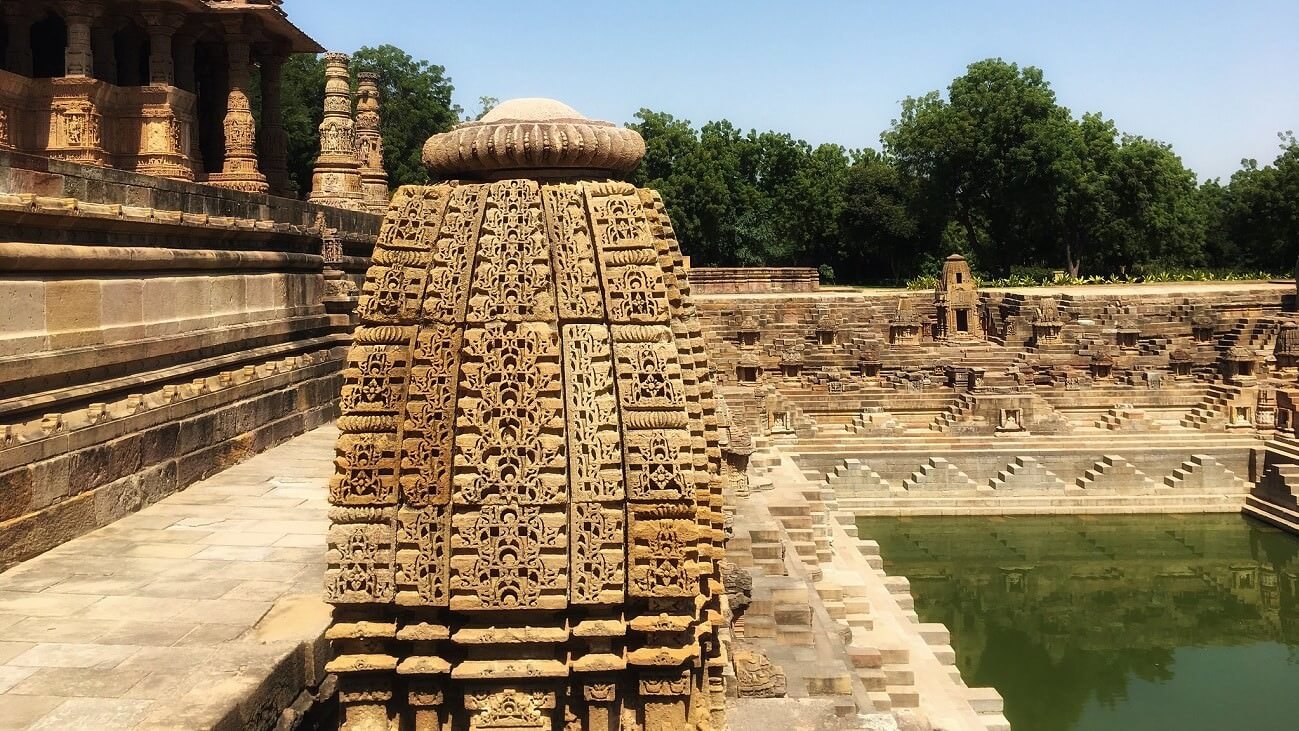
Keerti Torana
There used to be a Keerti Torana at the entrance of the Sabhamandapa that led into the Suryakund. The arches of the torana, or the gate, are long gone and all that remains is the two pillars that once held it up. The engravings on the pillar is detailed and very similar to the pillars of the Sabhamandapa.
Sabhamandapa
Sabhamandapa, the assembly or dancing hall is an octagonal hall made remarkable by its exquisite exteriors and 52 ornately carved pillars that once supported its dome-shaped ceiling. The pillars, each representing a week of the solar year have depictions of scenes from the Indian mythology and if one looks carefully, it is not difficult to find a scene from the Ramayana or the Mahabharata. The tall pillars are octagonal above a circular base and have human figures, mostly of dancers, done on all their faces in very detailed carvings.
It is said that the top of the Sabhamandapa rose high like a pyramid, hardly any of that remains now. The ceiling is circular in form, rising in layers and has rich floral patterns in each layer. Semicircular arches over pillars arranged in an octagon support the ceiling.
The exteriors of the Sabhamandapa is intricately decorated with motifs and figures. The base stands on an inverted lotus with richly carved flower patterns. Above the base are panels of dancers which lead to figures of gods and goddesses. The topmost panels have floral and erotic figures supporting the base of benches which run across the periphery of the mandapa. The decorations look strikingly similar to what we saw in the temples of Khajuraho.
Design patterns of the Sabhamandapa, the pillars, ceilings and base of the exterior.
The Temple
The main temple consists of two parts, the Gudhamandapa and the Garbhagriha. The Gudhamandapa has a rectangular plan with Vimana style of projections on each side, one projection on the smaller sides of the rectangule and two on the longer sides. The projections on the smaller sides form the arched gateway and the path to the temple, while the longer sides seemed to have had windows with stone latticework. The shikhara no longer exists, said to have blown up using gunpowder by Khilji.
The garbhagriha forms the inner sanctum in a square plan. It does not house an image of the deity anymore. The walls of the sanctum are relatively plain when compared to the rest of the temple. The doorway has carved figures of twelve faces of Aditya, the Sun god depicting each month of a solar year. There are carved figures of dancers and amorous couples as well, surprising to be inside the temple. However, almost all the figures have been damaged. It is said that the garbhagriha was designed in a way so that the first rays of the sun during solar equinox would light it up.
The outer walls of the temple are highly decorated with intricate stone carvings. The base lies atop lotus mouldings and rises with a band depicting men from everyday life. The figures of Sun and other gods are prominently depicted on the middle panels with panels of dancers and other forms also present. Surya is showed predominantly in a standing position, similar to Konark, holding lotus in both hands and riding a chariot pulled by seven horses.
Inside the Garbhagriha. The people listened with rapt attention while the guide narrated the tale of how glorious this temple was and how brutally was it destroyed. No wonder they end up hating those that they do.
The main temple with its ornate exterior and pillars, and a missing shikhara.
Final Thoughts
The Sun Temple at Modhera turned out to be much more than I had imagined it to be. After Konark and Khajuraho, I used to think I have seen everything the North India had to offer in terms temple architecture, and this overwhelmingly grand temple was a good reality check. Yes, while I was overwhelmed by its brilliance, I was also engulfed by frustrating anger and sadness. This wonderful specimen of architecture did not deserve to be destroyed so cruelly, just because its existence conflicted with the diktats given in some book. If the marauders were seeking glory in this destruction, I just wish they had lived long enough to see how miserly they failed.
Even though in ruins, the beautiful Sun Temple still stands proud in the reminiscence of its past glory, while nobody ever even spits at the graves of its destroyers. I guess that’s some resemblance of natural justice that we can seek solace in.
Hoping to explore more of this part of Gujarat in our next trip. Till then, આવ્જો.

